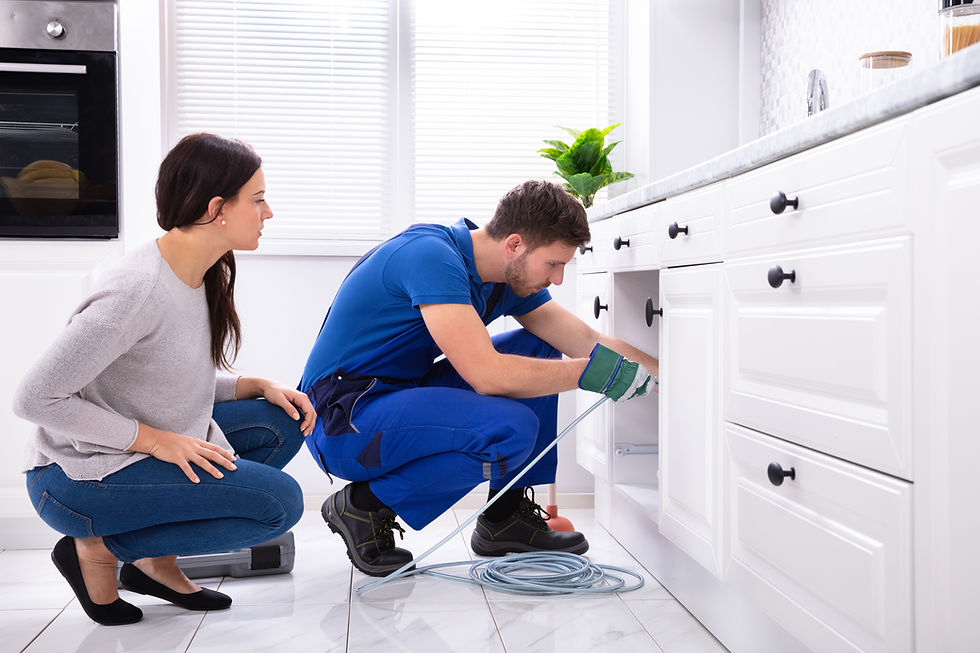Essential Guide to Plumbing in New Construction Projects
- pamsplumbingfl
- Nov 14, 2024
- 3 min read

When building a new home or commercial space, there's a lot to think about—layout, materials, flooring, lighting—and, of course, plumbing! Whether you're constructing a custom home or a business facility, understanding plumbing basics is essential for a smooth project. Here's everything you need to know about new construction plumbing and how Pam's Plumbing can help.
Key Components of Your Plumbing System
For any new construction project, your plumbing system will consist of several essential components to ensure your home or business is fully functional.
Pipes
Your plumbing will involve installing various types of pipes, each with its own purpose. For example, copper pipes are ideal for transporting hot water due to their heat resistance. Supply pipes will bring fresh water into the building, and drainage pipes will carry wastewater out.
Fixtures
Plumbing fixtures are the visible components you interact with daily, such as sinks, toilets, bathtubs, showers, faucets, and appliances like dishwashers and washing machines. These need to be carefully installed and connected to the plumbing system. Depending on your needs, gas lines may also be required for appliances like stoves and dryers.
Sewer Lines & Septic Tanks
Septic systems and sewer lines are vital parts of the plumbing process. Septic tanks, located underground, separate solid and liquid waste, with the liquid being filtered into the ground. Sewer lines remove sewage from your property and move it to the main sewer line, where it's treated before being released into the environment. These systems must be professionally installed, as they are complex and require expertise.
Shut-Off Valves
Each property will have a main shut-off valve that controls the water supply for the entire structure, as well as smaller valves for individual appliances like toilets and sinks. These valves are important for managing water flow during emergencies or routine maintenance.
New Construction Plumbing Process
When it comes to installing plumbing in a new construction project, the process generally follows these steps:
Step 1: Obtain Permits: Before any plumbing work can begin, the necessary permits must be obtained from local authorities. Your plumber should ensure all permits are properly secured and adhere to local building codes.
Step 2: Plan the Layout: A well-thought-out plumbing layout is crucial. This is when you'll work with your plumber to decide the placement of fixtures, pipes, and appliances. Getting this step right from the start can prevent costly changes later in the process.
Step 3: Rough-In Stage: During the rough-in stage, a plumber will begin installing pipes and fixtures, cutting holes in the walls and floors to accommodate plumbing needs. At this point, the plumbing is not yet connected to water or sewage lines.
Step 4: Installation: Once the rough-in is complete, the next step is to install the remaining plumbing fixtures and connect the system to the water and sewage lines.
Step 5: Testing: After installation, your plumber should test the entire plumbing system to ensure everything is working properly. Any leaks or issues will be addressed at this stage before the walls are closed up.
Step 6: Final Touches: The final step includes installing the finishing touches, such as faucet handles, toilet seats, and cleaning up the work area. Your plumber will make sure everything is in place and functioning as expected.
Tips for New Construction Plumbing Projects
To ensure your new construction plumbing project goes smoothly, consider these tips:
Work with a Professional: Plumbing is a complex system, and it's best left to experts. Pam's Plumbing has years of experience handling new construction plumbing and ensures everything is done right from the start.
Plan Ahead: Collaborate with your plumber, general contractor, and architect to create a detailed plan. This will help avoid unexpected issues and ensure everything is installed in the correct locations.
Get Permits: Make sure all necessary permits are secured before any work begins.
Test Thoroughly: After installation, thoroughly test the system to catch any potential issues early.
Building a new home or business is a big endeavor, and choosing the right plumbing company is crucial. Let us take the stress out of your plumbing needs. Contact us today to schedule a consultation and get started with your project.




Comments